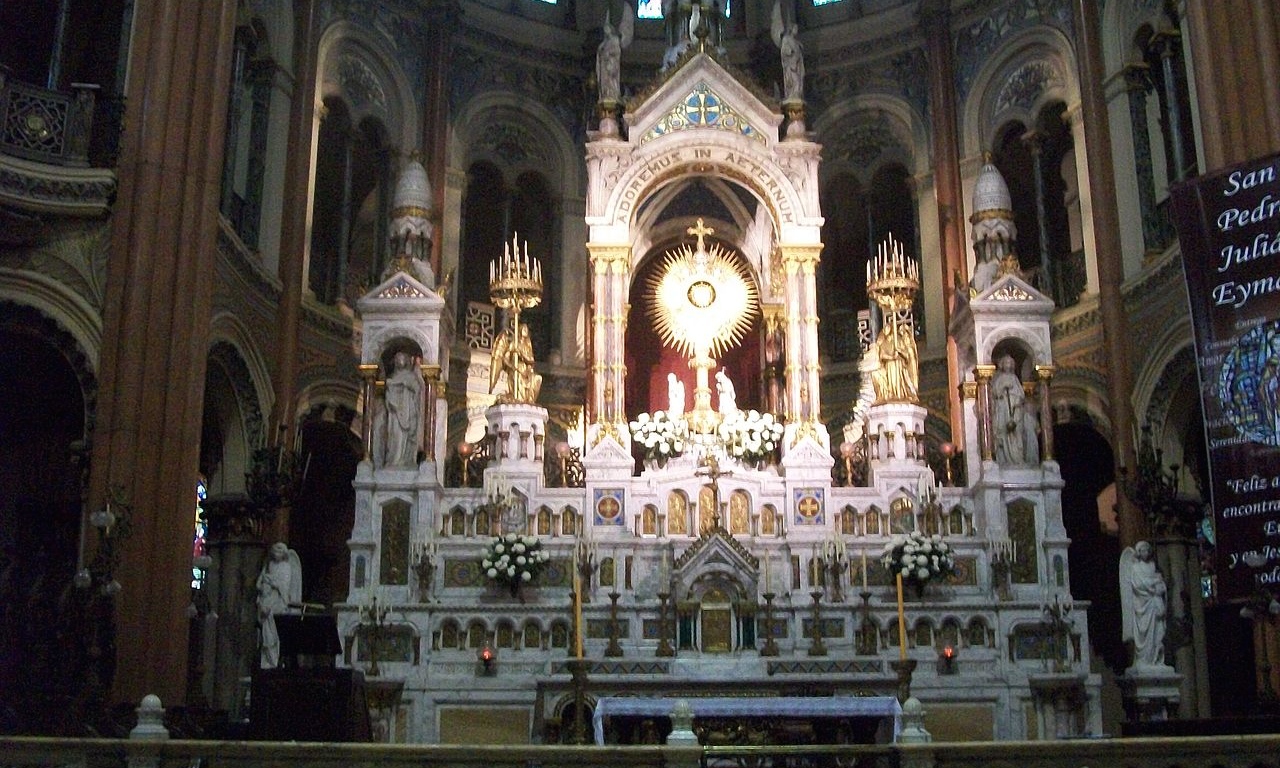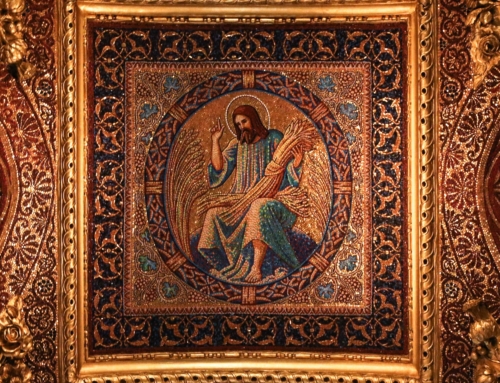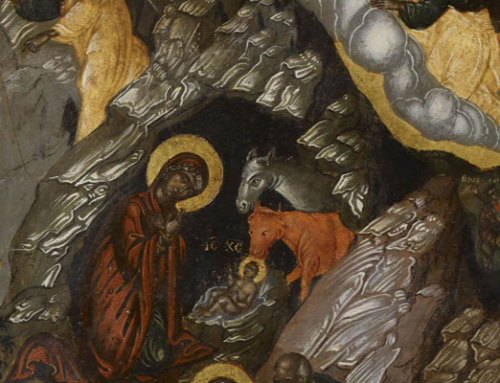Ever since the creation of the world, his invisible attributes of eternal power and divinity have been able to be understood and perceived in what he has made. –Rom 1:20
We learn and come to know what is invisible through our senses. We know the invisible through the visible. God, Who is invisible, immaterial, and hidden from our senses, reveals something of Himself in creation. In Thomistic terms, we say a cause can be known through its effects, albeit in a limited way.
Something spectacular about humanity, the crown of visible creation, is that it mimics God with its creativity. We don’t create as God creates—not even the angels do that—but we do reveal something hidden in our artistic creations. The artist reveals something of his soul in his work. The invisible life of the soul takes on a sensible form in the art. The visible effect reveals something of the invisible cause.
In the magnificent city entrusted to Our Lady of Good Air, Buenos Aires, hides a marvelous artistic work, the Basilica of the Blessed Sacrament. Some attribute the work to the Salesian priest Ernesto Vespignani, others to the Parisian architects Coulomb and Chauvet. What is certain is that the unity, harmony, and radiance of this work flows from its center: the sublime monstrance holding the Eucharist.
Reflecting on this marvel, we can appreciate what is seen and what is unseen. The Basilica is beautiful in its own respect, composed of marble, glass, and precious metal. Yet, it is an effect of a hidden cause, the artistic creativity of the architects and patrons. It is important to note that an effect is never greater than its cause. We can extend this important principle to also say that an effect is never more beautiful than its cause. The human soul is far more beautiful and precious than any of its created works, including this Basilica.
The porteños of the city refer to the Basilica as a templo, which is a happy term for a Catholic church. God dwells Eucharistically in this temple, and He also dwells spiritually in the temple of a graced soul.
Do you not know that you are temples of the Holy Spirit? (1 Cor 6:19)
Any artistic work, architectural or otherwise, that is centered on God can begin to reveal the beauty of the soul in which God dwells. This is something “into which angels longed to look” (1 Pt 1:12).
✠
Photo by Ezarate (CC BY-SA 3.0)







